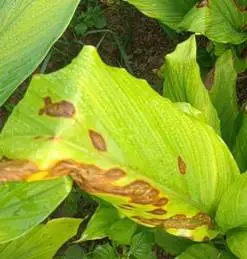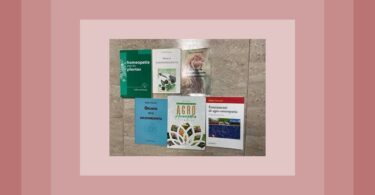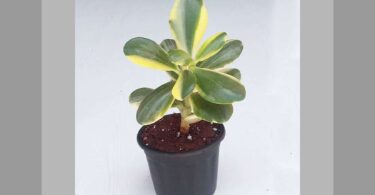Editor’s note: “JT potency” (Jenichen /Tichavsky) is a centesimal dilution followed by 500 succussions or five hundred continuous turns with a wooden stick to the right and 500 turns to the left (if handling larger volumes). The JT potency frequently has a better reaction in plants and it is very important in preparation of live bionosodes.
Dear Dr. Tichavsky,
Please provide us a solution for leaf spot and leaf blotch diseases in Turmeric crop. I live in Andhra Pradesh, South India. In my area the wet season is hot and overcast and the dry season is sweltering, muggy, and mostly clear. Over the course of the year, the temperature typically varies from 65°F to 105°F and is rarely below 60°F or above 112°F. Thank you so much.

Thank you
Pavan Kumar
Dr. Radko Tichavsky:
Dear Pavan,
The spots on Curcuma longa are caused by a cluster of fungi Colletotrichum sp., Phyllosticta sp., Cercospora sp. and also with bacteria Pseudomonas sp., or with conjunction with Taphrina maculans.
It can be applied preventively and to introduce resistance to this fungus live bionosode 2 JT from Trichoderma viride or from Pseudomonas fluorescens, once a month from planting.
Preventively you can apply also live bionosode 2 JT of Sacharomyces cerevisae and Bacillus amyloliquefasciens. Once the fungus is established in the crop the preventive remedies will not act well. Just apply Copper nanohomeopathic remedy (from copper colloid, processed in ultrasonic bath for three minutes, (three drops of colloid are added together with three drops of of colloid together with three drops of lemon juice as anticoagulant in half a liter of water put the ultrasound on.
Then it is dynamized at low potency. As an encapsulant use Boswellia sacra (hydroalcoholic TM from resin). A single application with vegetal oil as coadjuvant is generally sufficient to solve the problem. It is important to keep the nitrogen level low (do not apply animal excrements and their by-products, as well as excessive nitrogenous synthetic nitrogen fertilizers in excess.
It is advisable to reduce the density of planting by separating the plants to reduce contagion and competition for nutritional resources. It is advisable to maintain high levels of potassium, phosphorus and magnesium levels.
Hi Dr. Tichavsky,
What plants/varieties can I grow in zone 5, in Estonia, 58 latitude. Temperatures can be as cold as -25 or-30C sometimes. So far, we have managed to keep kale and some purslane and lambs lettuce alive under unheated hoops/covers. They grow slowly, but they grow.
Thank you
Therese
Dr. Radko Tichavsky:
Dear Therese,
There are many crops that can be produced despite the low temperatures (and low light in winter): Brassica oleracea var. sabellica is very cold-resistant, Brassica oleracea var. gemmifera can withstand frost and its flavor sweetens with cold temperatures, Brassica oleracea var. viridis similar to kale, is very frost-resistant, Allium sativum is planted in autumn, remains dormant in winter and resumes its growth in spring, Allium porrum, some varieties are very resistant and can survive the winter with protection, Pastinaca sativa remains in the ground during winter and is harvested in early spring, Spinacia oleracea, some varieties can survive harsh winters with protection, and also Vicia faba, which can be sown in autumn to be harvested at the beginning of summer.
The cold resistance of the plants I mentioned is relatively plastic; it can be increased with the application of amino acids like Proline, which naturally accumulates in plants as a mechanism of tolerance to water stress and cold, but applied at a potency of 3 JT, it helps stabilize the membranes and protects the plant proteins from the cold.
You can also apply Arginine at a potency of 3 JT; this stimulates the synthesis of polyamines that act as antioxidants and cryoprotectors of the membranes. Likewise, Glycine Betaine can be applied at a potency of 3 JT; it is an osmoprotector that allows the maintenance of enzymatic activities at low temperatures.
A key homeopathic remedy is Salix babylonica (from hydroalcoholic TM of twigs of the tree) at a potency of 4 JT. It contains Salicylic acid (hormone), which induces the resistance of plants to low temperatures. Jasmonic acid (hormone) at 4 JT plays function well in the regulation of cold-resistant genes and other resistance mechanisms.
Hi Dr. Tichavsky,
I have a question about how to apply remedies for trees. The advice I received from the plant doctors (in 2015) was to stir the remedy into a bucket of water stirring clockwise then anticlockwise for 15 minutes (advice was from Pawan).
Is there a quicker way to mix up a bucket of remedy than this (i.e. mixing up remedies in bulk)? I have a lot of trees to do as our native bush is affected around our property and I don’t know if I will be able to get through them all at that rate. Also, if using the above method, how many times do you do the clockwise stirring before counterclockwise?
Thanks,
Anna
Dr. Radko Tichavksy:
Dear Anna,
There are devices that allow the preparation of large quantities of homeopathy without the need for succussions or manual creation of vortices. These machines are faster, but in most cases, they need to be homemade. They are the continuous flow dynamizers, devices that produce vortices in a container, usually 200 liters or more.
There are various types: those that move the liquid with fins, those that do the same through nozzles that expel jets of water, and there are also those that move the water by creating vortices with air. Water is constantly added to the device and once dynamized, it is collected in another container (for instance, a cistern) from where it will be sprayed into the holon.
Hello Dr. Tichavsky
My experiment with making up a 9c of nutgrass and spraying it to discourage growth has been a spectacular failure – it has made the test patch lush and healthy – clearly a different solution is needed. Iin the photos compare it to an area that didn’t get sprayed! Have you got any ideas?

Thank you
Linlee
Dr. Radko Tichavsky:
Dear Linlee,
I understand your frustration with the outcome of the experiment using the homeopathic remedy Cyperus rotundus 9c. It is normal that instead of acting as a control, it stimulated the growth of this weed because when the plant is chopped to prepare the mother tincture, it produces IAA (indoleacetic acid, a growth hormone produced by Cyperus rotundus and many other Poaceae plants) especially during cutting and even after.
There are many remedies that act as allelopathic agents against C. rotundus, for example, homeopathic preparations from the roots of Manihot esculenta, Lippia gracilis, Leucaena leucocephala, Yucca shidiguera, Larrea tridentata, Gliricidia sepium, Calliandra calothyrsus, Sesbania sesban, Parthenium hysterophorus, and Eucalyptus camaldulensis.
All are applied at a low potency between 3-4 JT. Your selection will depend on the natural availability of these plants in your holon and they can even be applied in combination (in a single remedy).
Dear Dr. Tichavsky,
Can you suggest a remedy for Alterneria Blight in a Cumin farm? We are in Jaipur, India. Mailing code: 302001. Jaipur has a monsoon-influenced hot semi-arid climate (Köppen climate classification BSh) with long, extremely hot summers and short, mild to warm winters. Jaipur receives over 650 mm of rainfall each year.
Thank you
Amit
Dr. Radko Tichavsky:
Dear Amit,
Given the climatic conditions of Jaipur, India, and dealing with the phytopathogenic fungus Alternaria sp., which causes blight in a cumin crop, some homeopathic remedies that might serve as adjuvants include Origanum vulgare and Thymus vulgaris essential oils at a potency of 4 JT, Melaleuca alternifolia and Salvia officinalis essential oils at a potency of 4 JT.
The latter plant contains powerful anti-Alternaria metabolites: vanillic acid, p-coumaric acid, and eugenol. In the last dynamization of the homeopathic preparations, propolis ca be added as an encapsulating agent and applied at a potency of 4 JT.
Live bionosodes of Trichoderma viride and T. harzianum, which sequester nutrients and vital space from the pathogen and produce antagonistic enzymes. Live bionosodes of Penicillium, particularly P. citrinum and P. frequentans, exhibit competition mechanisms and antibiosis against Alternaria sp.
You can also apply Stereum hirsutum, which commonly colonizes dead wood. Prepare a TM in alcohol and apply at a potency of 4 JT. Similarly, other wood-decomposing fungi like Ganoderma lucidum and Ganoderma applanatum at 4 JT potency with Boswelia sacra resin (in TM) are used to control Alternaria sp. in cumin.
Dear Dr. Tichavsky,
Can you suggest what homeopathic remedies would help a tomato plant to start setting fruits. Plant looks very healthy, no pests, lots of blooms, but blooms fall off without setting fruit. Outside temperature 75-55 degrees (day/night). We’re in Abilene, Kansas (U.S.). Rainfall is over 45 inches a year. ZIP Code 67410.
Thank you
Ernesta
Dr. Radko Tichavsky:
Dear Ernesta,
Here are some homeopathic suggestions that might help the tomato plant’s flowers develop into tomato fruits. The first and most important are Boron. Boron plays a role in the synthesis and structuring of plant cell walls, helping to provide firmness and strength.
It facilitates the transport of sugars from the leaves to the fruits and seeds, promoting ripening and filling. It acts as a synergist for calcium, allowing it to be absorbed and transported efficiently by the plant. Boron contributes to the formation and activity of male gametes, improving the pollination and fertilization process.
It is essential during the early germination stage of seeds. A boron deficiency in tomatoes can negatively impact fruit growth and development, hindering growth and filling, affecting flower fertilization, causing many not to set into fruit. It can also affect the ripening and final quality of the fruit.
Interestingly, the amount of Boron required by the plant is minimal, so homeopathic applications are sufficient to address this deficiency. So, apply Boron 6 CH along with Calcarea carbonica 6 CH. They have to be applied twice a week as a foliar spray, alternating with Phosphorus, Sepia succus, both at a potency of 6 CH and Propoleo 4 JT.
Greetings Dr. Tichavsky,
Is there any way to get rid of ants in my organic vegetable garden? I have a huge infestation of giant black ants, approximately 15mm long. It is now a problem to walk there as they attack and bite.
Thank you
Cynthia
Dr. Radko Tichavsky:
Dear Cynthia,
To control the presence of Camponotus sp. (carpenter ants) in an organic environment like a garden, you can use various herbal and natural remedies that do not harm your plants or the environment. Here are some options:
Homeopathic remedies made from the mother tincture of Asian wasps (Vespa mandarinia), and from the fire ant Solenopsis invicta or the ant Neoponera villosa. To delineate the space of Camponotus sp. ants, you can apply Artemisia absinthium 4 JT, Cinnamomum verum 4 JT, and Azadirachta indica 4 JT
Online Diploma in Agricultural HoloHomeopathy (in English)
Transform your approach to farming with the Online Diploma in Agricultural HoloHomeopathy! This 6-month, fully online program is designed for farmers, agricultural professionals, and sustainability enthusiasts looking to implement effective, natural, and environmentally friendly farming practices. Duration: 6 months Mode: Online
Start Date: May 6th 2024
What You Will Learn:
- Foundations of Agricultural HoloHomeopathy: Discover how this practice improves soil health and crop productivity and resilience to climatic changes.
- Natural Pest Control: Learn to manage pests and diseases using homeopathic preparations, protecting biodiversity and avoiding harmful chemicals.
- Soil Fertility and Biodiversity: Enhance soil structure and promote a richly biodiverse environment with sustainable techniques.
- Concrete Results and Success Stories: Study real cases where Agricultural HoloHomeopathy has transformed farming practices, validating its effectiveness and benefits.
Diploma Benefits
- Certification: Obtain a certificate validating your knowledge and skills in Agricultural HoloHomeopathy.
- Taught by Dr. Radko Tichavsky, the diploma includes direct access to live sessions and exclusive materials.
- Practice Community: Join a network of professionals and enthusiasts with similar interests to exchange knowledge and experiences.
- Positive Environmental Impact: Contribute to sustainability and environmental health by applying what you’ve learned in your own projects or work environment.
Who Should Enroll?
This diploma is ideal for those committed to sustainable agriculture and looking to explore and apply innovative Agricultural HoloHomeopathy techniques to enhance the effectiveness, sustainability, and profitability of their farming practices.
Enrollment Open
Secure your spot in this unique program and take a step forward towards more sustainable and productive agriculture. Visit https://ecomenius.com/ for more information and to enroll. OR: write to [email protected]
Don’t miss the chance to be part of the revolution in sustainable agriculture with the Online Diploma in Agricultural HoloHomeopathy!
BOOKS ON HOLOHOMEOPATHY:
Many readers asked about Dr. Radko Tichavsky’s books. Below is a photo of them. They are available in Spanish, Italian and Portuguese. For ordering or information: [email protected]

New Video from Dr. Radko Tichavsky!
In this video, renowned Agrohomeopath Dr. Radko Tichavsky explains Holohomeopathy, the more advanced method of agrohomeopathy: https://youtu.be/GUUoO6Lt-U8 (English subtitles)





